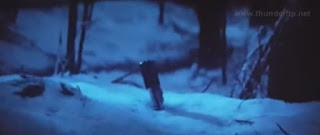draft
NB Of course there are spoilers for The Force Awakens (2016) below.
[Add V. Propp Russian folklore motifs.]
[This post is still being written and may appear somewhat incoherent at times until it settles down]
When
the original Star Wars (1977) came out there were a variety of
reasons proposed for its amazing success, most of which focused,
unfortunately, on the visual effects and the space locale. Those who
knew their science fiction, or their comparative religion, knew at
once that this was wrong. The real reason for the success was, Gods
forbid, the story. The folklore motifs were obvious to even the most
dim, which sadly did not include most Hollywood executives who can
not read the comics without assistance.
Now
that the “The Force Awakes” has done so well and is considered
the first real sequel of the series since perhaps Empire Strikes Back
(1980), it is reasonable to ask what folklore motifs may exist in the
plot. There are at least two obvious motifs that reach out and whack
one over the head with a broadsword, if I may say so, and one other
motif that is more modern.
[Insert references to Propp's compartive folklore.... ]
[Insert references to Propp's compartive folklore.... ]
The
three motifs are “the sword in the stone”, “the kind in the
mountain” and the more modern Mary Sue character.
Please excuse the bad image quality.
Please excuse the bad image quality.
The light saber is embedded in the snow. Ren tries to get it using the Force but fails, but suddenly the saber jumps out of the snow and into the hand of Rey who also seems a bit surprised.
In
the Sword in the Stone, a pretender to the throne attempts to
withdraw a magic sword from a stone in which it has been embedded which will confer the legitimacy of the kingship. It is said that no one will
rule the land until the true king appears and withdraws this sword from the
stone. In the film, our Darth wannabe, Ren, the very spoiled only
child of Han and Leia, in a fight with Finn and Rey in the snow
knocks Finn unconscious and the lightsaber embeds in the snow. He
uses his force powers to try and withdraw the sword from the snow,
but he can not. Then suddenly the sword leaps from the snow and
nearly knocks Ren down as it travels to Rey who looks a bit
surprised. The sword has chosen Rey. It must be noted here that
“rey” is Spanish for “king”. There are of course some links
of this motif to the Arthurian legends.
The King on his Mountain?
In the "King in the Mountain" motif, a great king from the past who has disappeared is secretly hidden in a mountain, often with a retinue of armed warriors, and he will return one day to save the country from destruction. Of course at the end of the film, Rey uses the map to travel to an island world where Luke Skywalker has retreated and hands him his old light saber. Will the King return to lead his people to freedom?
But what about modern fiction whether written or broadcast? Are there new classifications? Should we start having a regular addendum to the classic Propp folklore classifications?
If so, one of those classifications might be called "the Mary Sue character".
In fan literature, that is, stories written by non-professionals who are fans of a story or story universe, there is a type of character called a “Mary Sue”. This character is generally the author of the story him or herself who has inserted herself in the story and exhibits fabulous wish fulfillment characteristics such as, in the classic case, fixing the warp drive, defeating the Klingons and Romulans, and sleeping with either Kirk or Spock or both (hopefully not at the same time, but I could not guarantee that)
It is alledged by some that Rey in The Force Awakens is a Mary Sue character. She comes out of nowhere, she can fly the Millenium Falcon, saves Finn from the monsters, defeats Ren, saves the map, finds Luke Skywalker who is probably her father, and so forth.
It is alledged by some that Rey in The Force Awakens is a Mary Sue character. She comes out of nowhere, she can fly the Millenium Falcon, saves Finn from the monsters, defeats Ren, saves the map, finds Luke Skywalker who is probably her father, and so forth.
I
think that Rey is certainly a Mary Sue character although it is not
clear if she gets to sleep with Spock. This topic (whether Rey is a Mary Sue) is very controversial on the Internet.
Of course, being a Mary Sue is not a classic folkloric motif, at least not yet.
But perhaps she will be one day. Perhaps academic folkloric analysis should elevate the Mary Sue motif to the level of "the evil villain stops to describe his vile plot to take over the world" and other standards of the current cinema, such as the fight between giant robots, and recognize that a whole new set of motifs has been created to serve the collective unconsciousness of our folk.
But perhaps she will be one day. Perhaps academic folkloric analysis should elevate the Mary Sue motif to the level of "the evil villain stops to describe his vile plot to take over the world" and other standards of the current cinema, such as the fight between giant robots, and recognize that a whole new set of motifs has been created to serve the collective unconsciousness of our folk.
________________________________________
Folklore
on Wikipedia
Excalibur
in the Sword in the Stone on Wikipedia
The
King in the Mountain motif on Wikipedia
https://en.wikipedia.org/wiki/King_in_the_mountain
Here is an article in Forbes Magazine about the Mary Sue controversy.
Here is an article in Forbes Magazine about the Mary Sue controversy.




No comments:
Post a Comment